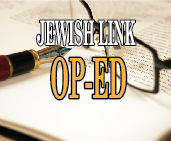What is “Orthodox”? Is it “Haredi”? Is it “Modern”? Is it “Ultra” (ugh)? Is it “Yeshivish”?
A conversation with Alan Cooperman of the Pew Research Center, who headed up the recent Pew survey of American Jews, suggested to me once again that the Orthodox world is a confusing place. I ask not, “Who is a Jew?” but “Who is an ‘Orthodox’?”
What is “Orthodox”?
Fifty years ago, Orthodox Jews (who had been known at the turn of the twentieth century as “Traditionalist”) talked about three flavors of Orthodoxy: (1) the Modern Orthodox; (2) the “Yeshiva Welt,” the arena of sectarian (“Haredi”) yeshivas—Torah Vo- Da’as, Mir, Telz, Chaim Berlin, Lakewood, and many others; and (3) Chasidim. Period.
None of these categories, in 2014, works in the way it did in 1954 or 1964—or even 1994.
My taxonomy? The categories are six: Modern Orthodox; Centrist Orthodox; the Yeshiva arena (“yeshivish”); Chasidim; Chabad; and Satmar. These last two, whatever else they may be, are not Chasidim.
Modern Orthodox first. The Modern Orthodox of sixty years ago made the point to the rest of the Jewish world that Orthodoxy was not just an accretion of unthinking, obscurantist, practices, but was and is a religion with serious intellectual underpinning. The idea of “halakha”—a concept visited upon the community by Rabbi Joseph B. Soloveitchik—when I was a kid we used the term “din” to denote the normative system—told us that there was a rational construct defining and informing the world of orthopraxis. Modern Orthodoxy in the 1950s and 1960s talked not only to the Orthodox but also to the non-religious Jewish world—and to the non-Jewish world as well.
Beginning in the mid-1960s and stretching into the 1980s and ‘90s, two things happened. First, religiously, Modern Orthodox began looking over their right shoulder at the more sectarian world of Agudath Israel and the Brooklyn Yeshivas. “Hmm—they are wonderfully observant, they sit and ‘learn,’ and they do send their kids to college!” Second, in terms of interaction with the external world—what we call “public affairs”—the Modern Orthodox began moving in a rightward direction.
The result: the overwhelming majority of those who we used to call “Modern Orthodox” 50 and 60 years ago are further to the right both religiously and in terms of public affairs, increasingly conservative on public-affairs issues, and on Israel, and on religious issues. The Modern Orthodox world of the 1960s, moderate-to-liberal on most public-policy issues—church-state, civil rights, Israel, even reproductive choice—has moved steadily rightward. These are the “Centrist Orthodox.”
How did this state of affairs come to be? Historically, Orthodoxy was viewed by the non-Orthodox as oppressive and pre-Modern. Today, precisely those characteristics that decades ago were viewed as negatives are at the root of the appeal of many in the Centrist Orthodox community. Orthodoxy provides community; it is protective of its adherents; it provides certainty in an uncertain world. The sense of certitude and the lack of freedom, viewed as negatives in earlier years, are today considered positives and strengths, and fuel the Centrist Orthodox surge. The old Modern Orthodox, those of us who viewed intellectual and societal inquiry and religious normative values as enhancing one another, are embattled.
Alas, the Modern Orthodox today is small and beleaguered. The hegemony of the Centrist Orthodox—most Orthodox shuls today are Centrist—is the result of the well-known dropping out of the “Modern” in Modern Orthodoxy. In the old “Modern Orthodox,” the “Modern” got pinched by a conservative public-affairs agenda; the “Orthodox” got pinched by a rightward-looking religious agenda.
The Modern Orthodoxy of today, distinguished from the Centrist, is the only place in the world of traditional observance where interesting, creative, innovative things are happening. Today’s “Modern” Orthodoxy is what Modern Orthodoxy was sixty years ago. Indeed, where exciting and innovative questions are raised about and solutions are offered is in the Modern Orthodox arena. It is the arena of Drisha and Yeshivat Maharat, offering traditional study of Jewish texts for women; of Rabbi Irving/Yitz Greenberg; of the “partnership” minyanim, pushing the envelope in traditional structures of prayer; of Yeshivat Chovevei Torah’s “Open Orthodoxy.”
Third, there is the arena of the “yeshivish,” to use the contemporary locution that categorizes the world of the sectatarian yeshivas, with the Lakewood behemoth having cannibalized many of the once-proud yeshivas in Brooklyn (Torah Voda’as, Mir, Chaim Berlin) and elsewhere. These yeshivas are the mainstay of the sectarian “black-hat” world, with few students go to mainstream colleges—a radical departure from 50 years ago.
Fourth, the Chasidic communities are those identified with the substantial “Ger” and “Bobov” Chasidim, but with numerous other groups. Once defined by the fact that the core of their world was the study of and adherence to the writings of Chasidic masters, Chasidism today is more a matter of external appearance and devotional prayer.
Finally, Chabad and Satmar. One thing is clear: Chabad and Satmar, whatever else they might be, are not Chasidim. Chabad and Satmar deserve their own discussions. Suffice it to say that Chabad, a discrete group, bears no resemblance to the Chasidic Chabad in Europe a century ago. Centered on outreach and P.R., they cannot be characterized as “Chasidic.” Simply put, the Chabad of today does not do “Chasidus”— Chasidic text-study.
Satmar, a sectarian group, is also—contrary to conventional wisdom—not Chasidic. With its own distinct separationist character, Satmar is far more “yeshivish” than Chasidic. Indeed, Rabbi Joel Teitelbaum—Rav “Yoilish,” who brought Satmar to America—considered himself to me more an Eastern European “rav” than a Chasidic “rebbe.”
Is this six-category taxonomy cumbersome? Perhaps—but it works. “Centrist,” “Chasidim,” “Chabad,” “Modern”: they are vastly different from one another—but they’re all Orthodox!
By Jerome A. Chanes









